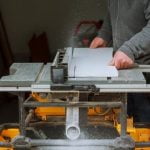Are you looking to improve your woodworking skills but find yourself short on time? Don’t worry, quick practice sessions can be just as beneficial as longer ones. By dedicating even a small amount of time each day to honing your woodworking abilities, you can see significant improvement over time. Whether you’re a beginner looking to learn the basics or an experienced woodworker wanting to perfect your craft, having a quick practice using woodworking can be a rewarding experience.
Practicing woodworking not only helps in enhancing technical skills but also aids in boosting creativity and problem-solving abilities. Quick practice sessions allow you to focus on specific techniques or projects without feeling overwhelmed by the time commitment. This approach enables you to build confidence and steadily progress in your woodworking journey. Additionally, regular practice sessions help in maintaining muscle memory and hand-eye coordination, essential for mastering intricate woodworking tasks.
In this article, we will delve into the importance of practicing woodworking skills through quick sessions and explore various tips and techniques to make the most out of your practice time. From setting up a designated practice area with necessary tools to choosing the right project for quick practice, we will guide you through each step of the process.
By following our step-by-step instructions and avoiding common mistakes, you’ll be well on your way to becoming a proficient woodworker through consistent and focused practice. So let’s roll up our sleeves, grab our tools, and start having a quick practice using woodworking.
Getting Started
Practicing woodworking skills requires a dedicated space where you can focus and work safely. Setting up a designated woodworking practice area is essential to ensure efficiency and prevent accidents. Here are some tips to help you get started:
Choose the Right Location
Select a well-ventilated area with good lighting for your woodworking practice space. Make sure the space is clutter-free and has enough room for you to move around comfortably. Consider setting up near a power outlet for your tools.
Organize Your Tools
Invest in a sturdy workbench or table where you can set up your tools and materials. Keep your tools organized and within easy reach to avoid wasting time searching for them. Use storage solutions like toolboxes or pegboards to keep everything in its place.
Safety First
Always prioritize safety when practicing woodworking. Wear appropriate protective gear, such as safety goggles and ear protection. Keep a fire extinguisher nearby and familiarize yourself with emergency procedures. Make sure your workspace is free of any tripping hazards or obstructions.
By following these tips, you can create a safe and efficient woodworking practice area that will help you hone your skills effectively. Remember that having the right setup is crucial for productive practice sessions and overall improvement in your woodworking abilities. So, take the time to organize your space before getting started on your next project.
Choosing the Right Project
When it comes to woodworking practice sessions, choosing the right project is key to both honing your skills and staying motivated. Selecting simple woodworking projects that can be completed in a short amount of time allows you to have quick wins and build confidence in your abilities. These projects also help you focus on mastering basic techniques before moving on to more complex tasks.
Small Wooden Box
One classic project that is perfect for quick practice sessions is making a small wooden box. This project allows you to practice measuring, cutting, and assembling pieces of wood while also learning how to create strong joints. Additionally, a small wooden box can serve as a practical item for storing small trinkets or serving as a decorative piece in your home.
Cutting Board
Another simple woodworking project that is great for quick practice is making a cutting board. This project requires minimal materials and tools, making it ideal for beginners looking to improve their woodworking skills. By focusing on precision cuts and sanding techniques, you can create a useful kitchen item while also refining your craftsmanship.
Coat Rack
If you’re looking for a slightly more challenging but still manageable project for quick practice sessions, consider making a coat rack. This project involves creating multiple hooks or pegs mounted on a wooden board, requiring you to work on measurements, drilling holes, and finishing techniques. A coat rack is not only functional but also provides an opportunity to experiment with design elements such as shape and color.
By choosing the right woodworking projects for your quick practice sessions, you can effectively enhance your skills while enjoying the process of creating tangible items with your own hands. These simple projects will help you build a strong foundation in woodworking and prepare you for more intricate tasks in the future. So gather your tools and materials, pick a project that interests you, and start having fun with your woodworking practice sessions today.
Step-by-Step Guide
Woodworking projects can be a fun and rewarding way to express creativity and improve your woodworking skills. Whether you are a beginner or a seasoned woodworker, setting aside time for quick practice sessions can help hone your craft effectively. In this section, we will provide detailed instructions on how to complete a woodworking project quickly and efficiently.
First and foremost, it is essential to choose a project that matches your skill level and the time you have available for practice. Simple projects like a wooden picture frame, a small shelf, or a basic cutting board are great options for quick practice sessions. Once you have selected a project, gather all the necessary tools and materials before starting. This will help streamline the process and save time during your practice session.
Next, carefully read through the instructions for the chosen woodworking project. Make sure to understand each step involved in completing the project before getting started. Organize your workspace by setting up all the tools and materials within easy reach. Remember to prioritize safety by wearing appropriate protective gear, such as goggles and gloves, especially when working with power tools. Following these steps will ensure that you can complete your woodworking project quickly and efficiently while maintaining safety standards.
| Woodworking Project | Estimated Time |
|---|---|
| Wooden Picture Frame | 1-2 hours |
| Small Shelf | 2-3 hours |
| Basic Cutting Board | 1-2 hours |
Remember that practice makes perfect when it comes to woodworking. By dedicating time to quick practice sessions regularly, you will see improvement in your skills over time. Focus on mastering basic techniques such as measuring, cutting, sanding, and finishing to build a strong foundation for more complex woodworking projects in the future.
Don’t be afraid to make mistakes along the way; learning from them is an important part of the woodworking process. With dedication and consistent practice, you will enhance your woodworking abilities and create beautiful handmade pieces with ease.
Practice Techniques
Woodworking, like any other skill, requires practice to hone and improve. With regular practice sessions, woodworkers can enhance their skills, develop better techniques, and create stunning projects. To make the most out of your woodworking practice, it is essential to incorporate various techniques and methods that can help you progress efficiently.
Here are some practice techniques you can use to improve your woodworking skills:
- Focus on specific skills: Identify areas where you need improvement, whether it’s cutting precise joints or refining your finishing techniques. Practice these specific skills repeatedly to master them.
- Practice with different tools: Experiment with a variety of woodworking tools to become proficient in using each one. This will broaden your skill set and make you more versatile in tackling different projects.
- Challenge yourself with new projects: Push yourself out of your comfort zone by taking on projects that require new skills or techniques. This will keep your practice sessions engaging and help you grow as a woodworker.
By incorporating these practice techniques into your woodworking routine, you can steadily progress and refine your skills over time. Remember that consistency is key when it comes to improving any skill – the more regularly you practice, the faster you will see improvements in your woodworking abilities. So don’t hesitate to carve out some time for quick practice sessions using woodworking – your future self will thank you for it.
Common Mistakes to Avoid
Woodworking is a skill that requires practice and patience to master. Whether you are a beginner or have some experience, it is crucial to have a quick practice using woodworking techniques to hone your skills. However, there are common mistakes that beginners often make while practicing woodworking that can hinder their progress. By being aware of these errors and learning how to avoid them, you can make the most out of your practice sessions.
One common mistake that beginners make when practicing woodworking is not paying attention to safety precautions. It is essential always to wear the appropriate safety gear, such as goggles and gloves, when working with tools. Additionally, ensure that your workspace is well-ventilated and free of any tripping hazards. By prioritizing safety during your practice sessions, you can prevent accidents and injuries.
Another frequent error that beginners make is rushing through a project without proper planning. Before starting any woodworking project, take the time to plan out each step carefully. Measure twice before making any cuts and double-check your work to avoid costly mistakes. Remember that woodworking is a precise craft that requires attention to detail. By taking the time to plan and execute each step correctly, you will see better results in your practice projects.
| Common Mistakes | How to Avoid Them |
|---|---|
| Not wearing safety gear | Always wear goggles, gloves, and other protective equipment |
| Rushing through projects | Take the time to plan each step carefully and double-check measurements |
Tools and Materials
Woodworking, as a craft, requires certain tools and materials to ensure successful practice sessions. Whether you are a beginner looking to hone your skills or an experienced woodworker wanting to refine your techniques, having the right tools and materials is essential. Here are some recommendations for the essential items you will need to have a quick practice using woodworking:
- Power Tools: Invest in basic power tools such as a saw, drill, and sander to make cutting, drilling, and sanding tasks easier and more efficient.
- Hand Tools: A set of quality hand tools including chisels, hammers, screwdrivers, and clamps will come in handy for detailed work and shaping wood.
- Safety Gear: Protective gear such as safety goggles, hearing protection, and a dust mask should always be worn during woodworking to prevent accidents and exposure to harmful particles.
- Measuring Tools: Accurate measurements are crucial in woodworking, so make sure to have measuring tapes, squares, levels, and marking tools on hand.
In addition to tools, having the right materials is just as important when practicing woodworking. Here are some recommended materials you should have ready for your woodworking practice sessions:
- Wood: Choose suitable types of wood for your projects based on their durability and ease of working with them. Popular choices include pine, oak, maple, and birch.
- Fasteners: Stock up on nails, screws, hinges, and other fasteners needed to assemble your woodworking projects securely.
- Finishes: Give your completed projects a polished look by having various finishes such as stain, paint, varnish, or sealant available for use.
- Sandpaper: Smooth out rough edges and surfaces with different grits of sandpaper ranging from coarse to fine.
By ensuring you have the necessary tools and materials at your disposal for woodworking practice sessions, you can focus on improving your skills and creating beautiful pieces with confidence. Remember that proper maintenance of tools and organization of materials will enhance the efficiency of your practice sessions in the long run.
Setting Goals
One important aspect of setting goals for woodworking practice is to make them realistic and attainable. Start by identifying areas in your woodworking skills that you want to improve, such as mastering a certain technique or completing a project within a specific timeframe. Break down these larger goals into smaller milestones that you can work towards during each practice session. This incremental approach can help prevent feeling overwhelmed and keep you motivated as you see progress with each milestone achieved.
Tracking your progress over time is another crucial part of goal-setting for woodworking practice. Keep a record of the projects you’ve completed, the techniques you’ve mastered, and any new skills you’ve learned along the way. This not only serves as a visual representation of how far you’ve come but also helps identify areas where you may need more focus and improvement.
Regularly evaluating your progress against the goals you’ve set can guide your future practice sessions and ensure that you continue to grow and develop as a woodworker. Ultimately, setting goals for woodworking practice sessions can lead to more effective learning, skill development, and overall improvement in your craftsmanship.
Conclusion
Woodworking is a skill that requires practice and dedication to master. By having quick practice sessions, individuals can improve their woodworking skills efficiently while enjoying the process. The benefits of practicing woodworking regularly include honing craftsmanship, enhancing creativity, and experiencing the satisfaction of creating something with your own hands. These are valuable skills that can be carried forward into various aspects of life, making woodworking not just a hobby but also a worthwhile pursuit.
In conclusion, setting aside time for quick woodworking practice sessions can lead to significant improvements in one’s skills and confidence in working with wood. Whether you are a beginner or an experienced woodworker, regular practice is essential for growth and development.
Remember to start small with simple projects, gradually increasing the complexity as you gain more experience. By following the tips provided in this article and staying committed to your practice, you will undoubtedly see progress in your woodworking abilities over time.
So why wait any longer? Take out your tools, set up your designated woodworking area, and start your practice sessions today. Whether it’s building a small shelf, crafting a wooden figurine, or refurbishing old furniture, there are endless possibilities for you to explore and create. Embrace the rewarding journey of woodworking practice and unleash your creativity through this timeless craft. Start now and embark on a fulfilling woodworking adventure that will surely bring joy and satisfaction along the way.

Hi everyone! I’m a woodworker and blogger, and this is my woodworking blog. In my blog, I share tips and tricks for woodworkers of all skill levels, as well as project ideas that you can try yourself.





